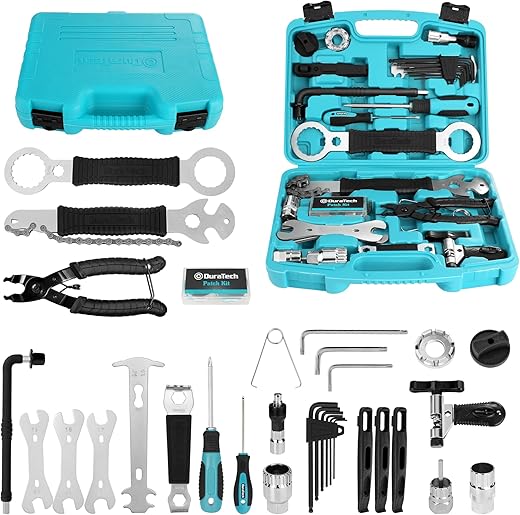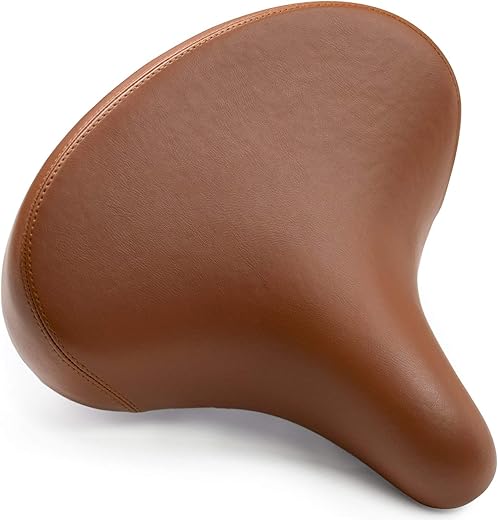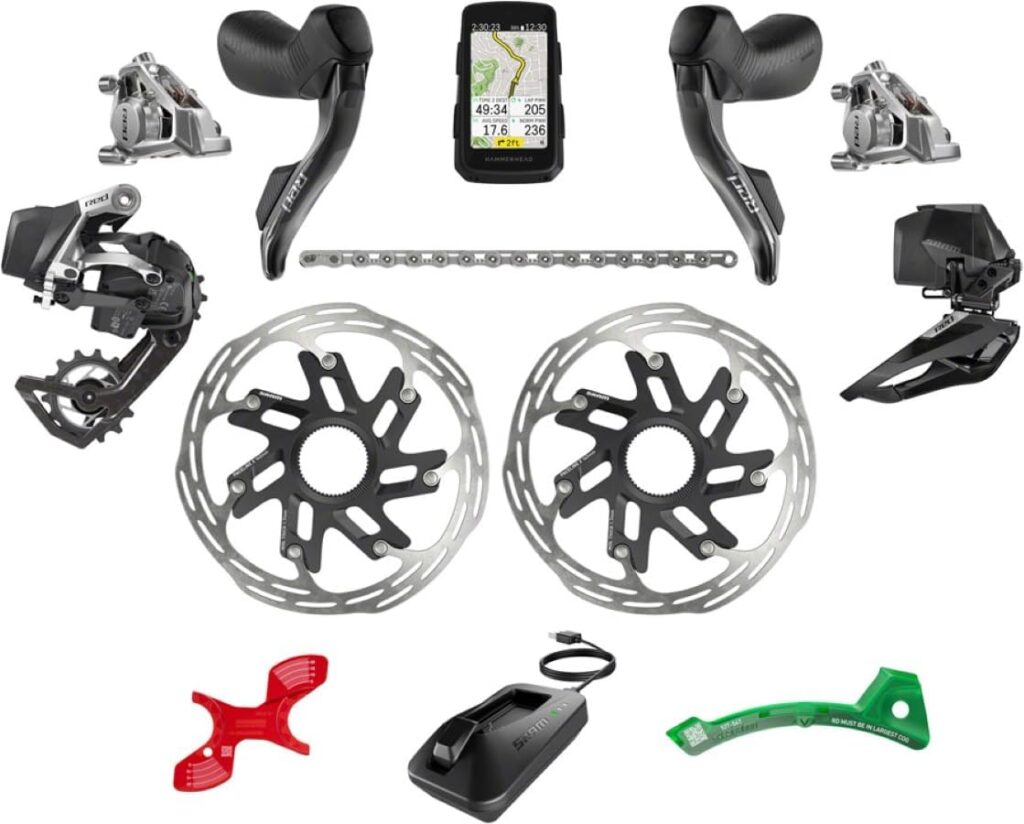Getting Started with Mountain Bike Maintenance
Maintaining your mountain bike is essential for ensuring it performs at its best and lasts for years. As an avid rider, I understand how crucial it is to keep your bike in optimal condition. With the right maintenance techniques, you can enhance your riding experience and even save money on costly repairs down the line.
In this article, I’ll share my top tips for effective mountain bike maintenance. From understanding the various bike components to key practices for cleaning, lubrication, and tire care, I’ve got you covered. Join me as I break down the essential practices that will keep your bike operating smoothly and ready for any trail adventure!
Understanding Your Bike Components
Before diving into maintenance, it’s crucial to understand the basic components of your mountain bike. Each part of your bike plays a vital role and works in harmony to deliver that exhilarating ride we all crave. By becoming familiar with these components, you not only enhance your capability to perform maintenance but also empower yourself as a rider.
The Frame
The frame is the backbone of your bike, providing structure and support. Typically made from aluminum, carbon, or steel, each material offers different advantages in weight and strength. Understanding your frame will help you assess any dents or weaknesses that could affect performance during a ride.
Wheels and Tires
Next up are your wheels, which consist primarily of rims, hubs, and spokes. The wheels’ size and width greatly influence your bike’s handling and stability. Checking tire pressure is an essential part of tire maintenance; a well-inflated tire improves traction and reduces the risk of punctures.
Brakes
The braking system—whether hydraulic or mechanical—ensures your safety on descents or during sharp turns. Understanding the composition of your brake pads and rotors helps identify when they need replacement or adjustment, ultimately enhancing your stopping power.
Drivetrain
The drivetrain consists of the chain, cassette, and derailleurs, and is responsible for transferring your pedaling power to the wheels. Regularly checking the condition of your chain and ensuring proper gear adjustments leads to smoother shifts and a more enjoyable ride.
In getting to know your bike components, I’ve found that it’s not merely about having technical knowledge—it’s about forming a connection with the machine you ride. Each part tells a story of the trails you’ve conquered, and caring for them allows your bike to take you on even more adventures.
With an understanding of your bike’s components firmly in hand, let’s move into the essentials of keeping your mountain bike clean and shining. After all, a clean bike is a happy bike!
Cleaning Your Mountain Bike: Tools and Techniques
Regular cleaning is a fundamental aspect of maintaining your mountain bike. A clean bike not only looks good but also performs better, minimizing wear and tear on components. Let’s dive into the essential tools needed for a thorough clean, along with effective techniques that ensure your bike receives the care it deserves.
Essential Cleaning Tools
Before you start the cleaning process, it’s crucial to gather the right tools. Here’s a list of my go-to cleaning essentials:
Step-by-Step Cleaning Techniques
- Rinse the Bike: Start by rinsing your bike with water to remove the initial layer of dirt. Avoid high-pressure washers as they can push water into bearings and other sensitive areas.
- Apply Bike Wash: Use your biodegradable bike wash, applying it generously to the frame and components. Don’t forget to focus on areas like the chain and cassette, where grime loves to cling.
- Scrub Gently: With your soft brushes, scrub the various components. Use a larger brush for the frame and smaller ones for tight spots like the derailleur and brakes. Be gentle to avoid scratching any surfaces.
- Clean the Chain: If the chain is particularly grimy, use a chain cleaning tool or an old toothbrush dipped in degreaser to give it a thorough clean. This is crucial for maintaining smooth shifting.
- Rinse Again: After scrubbing, rinse everything off thoroughly with clean water to remove any soap residue.
- Dry and Polish: Use microfiber cloths to dry your bike and polish any metal surfaces. This helps prevent corrosion and leaves your bike sparkling.
By investing a little time into these cleaning techniques, you’ll keep your mountain bike in peak condition, ready for any trail ahead. Now that we’ve tackled cleaning, let’s move on to another important aspect of maintenance: lubrication!
The Importance of Lubrication
When it comes to mountain biking, lubrication is key to ensuring that your bike runs smoothly and efficiently. Without proper lubrication, moving parts can create friction, leading to excessive wear and tear. In this section, I’ll share the types of lubricants best suited for various components, how often to apply them, and valuable tips for avoiding the pitfalls of over-lubrication.
Choosing the Right Lubricant
Different parts of your mountain bike require different types of lubricants:
How Often to Lubricate
As for frequency, consider your riding conditions:
Avoiding Over-Lubrication
While lubrication is crucial, overdoing it can attract grime, leading to deterioration. Here are some tips to avoid this pitfall:
With a proper understanding of lubrication, you’ll set the stage for smoother rides and prolonged component life. This foundation prepares us beautifully for our next focus: gear and chain maintenance, where we’ll ensure your shifts are always smooth and precise.
Tire Care: Pressure, Tread, and Maintenance
Tires are the only contact point between your bike and the ground, making their upkeep vital. Proper tire maintenance not only enhances safety but also optimizes performance on various terrains. Here, I’ll share how to check tire pressure, assess tread wear, and the essentials of maintaining your mountain bike tires.
Tire Pressure: The First Line of Defense
Maintaining the correct tire pressure is crucial for optimal grip, comfort, and control. Here’s how to do it:
Assessing Tread Wear
Tread depth is critical for traction and handling. Here’s what to look for:
Routine Tire Maintenance
Your tires will benefit from regular attention:
By keeping your tires in tip-top shape, you can enhance not only safety but also the quality of your ride through the toughest terrains. With your tires ready to tackle any trail, let’s delve into the crucial elements of brake maintenance—because nothing is more important than reliable stopping power!
Brake Maintenance: Keeping Your Stopping Power Strong
Brakes are a critical safety feature on any mountain bike. The importance of reliable stopping power cannot be overstated, particularly when navigating steep descents or tight corners. To keep your brakes in top condition, it’s essential to understand the different brake systems, how to maintain them, and what signs of wear to watch for.
Understanding Brake Systems
Mountain bikes typically come equipped with either mechanical or hydraulic disc brakes, each requiring slightly different maintenance approaches.
Regular Brake Checks
I make it a habit to check my brakes before every ride. Here’s what I look for:
Common Signs of Wear
Pay attention to these key indicators that your brakes may need some TLC:
To maintain peak performance, I recommend bleeding hydraulic brakes every six months using a reliable kit like the one below:
Routine Maintenance Steps
- Adjust and Align: Ensure pads are correctly positioned and aligned to the rotor for optimal contact.
- Clean Components: Use isopropyl alcohol to clean rotors and pads, as dirt can significantly impact performance.
- Replace Fluid (Hydraulic): Regularly replacing brake fluid will ensure your hydraulic system operates effectively and remains free of air bubbles.
By performing these maintenance steps, I’ve often found that a little attention to my brakes goes a long way in ensuring a safe ride. With stopping power sorted out, the next step is to ensure that shifting gears remains as smooth as ever, so let’s dive into gear and chain maintenance!
Gear and Chain Maintenance: Smooth Shifting Ahead
The drivetrain is one of the most complex systems on a mountain bike, and keeping it in good condition is key to smooth shifting. A well-maintained chain and gear setup not only enhance your riding experience but can also prevent premature wear on components. Here, I’ll dive into how to clean and adjust your gears and chain, as well as tips for preventing rust and wear.
Cleaning Your Chain and Gears
One of the first steps to ensure smooth shifting is a clean drivetrain. Dirt and debris can accumulate quickly, which leads to sluggish shifting and increased wear. Here’s how I go about cleaning my chain and gears:
- Gathering Supplies: You’ll need a chain cleaning tool, degreaser, a brush, and a microfiber cloth. I highly recommend using a chain cleaning tool that’s easy to hold and fits snugly on your chain.
- Degreasing: Apply degreaser to your chain and let it soak for a few minutes. Afterward, attach the cleaning tool and run the chain through it while pedaling backward. This action scrubs off grime efficiently.
- Rinsing and Drying: Wipe excess degreaser off with a microfiber cloth to prevent residue from affecting the lubricated parts.
Adjusting Your Gears
Even if your chain and gears are clean, you might still experience shifting issues. Here’s how to adjust your gears:
Preventing Rust and Wear
To extend the lifespan of your chain and gears, it’s crucial to take preventative measures:
By keeping your gears and chain in optimal condition, I find that shifting becomes an effortless process, resulting in a more enjoyable ride. Now that we’ve covered drivetrain maintenance, let’s summarize the essential takeaways for great mountain bike upkeep in the conclusion!
Summing Up: The Key to Longevity and Performance
In conclusion, maintaining your mountain bike doesn’t have to be a daunting task. By following the best practices I’ve shared, I’ve found that keeping your bike in great shape not only enhances your riding experience but also significantly extends the lifespan of your equipment. Regular maintenance saves time and money over the long haul, allowing us to focus on what we love most—riding.
So, I encourage you to make bike maintenance a part of your routine. A little care goes a long way in ensuring your mountain bike is always ready for your next adventure. Get out there and ride with confidence, knowing that your bike is performing at its best!




All these tools are great, but sometimes I just need a quick fix. Any recommendations for basic maintenance without all the fancy stuff?
A good multi-tool can go a long way! You’d be surprised what you can do with just that.
Great point! Sometimes keeping it simple is the best approach.
The tire care section was spot on! I always ignored tire pressure, but wow did it make a difference. That AstroAI Digital Tire Pressure Gauge is a must-have!
Totally! It’s amazing how much better the bike handles with the right pressure. 😍
Glad you found it useful! Tire maintenance is crucial for safety.
I’ve been using the Finish Line Dry Bike Lubricant for a while now, and it works like a charm! 🌟 I recommend it to everyone. Just don’t overdo it or you’ll end up with a sticky mess!
Agreed! I made that mistake once—never again! 😂
Thanks for sharing your experience! Proper lubrication is key for performance.
Just got into mountain biking and this article was super helpful! I had no idea cleaning my bike was so important. 😅 I’m definitely gonna grab that Complete Bike Cleaning Kit Essentials. Anyone tried it?
I got the complete kit last month! It’s pretty comprehensive and made my bike look brand new. You won’t regret it! 🚴♀️
Glad you found it helpful! The cleaning kit is a great investment for keeping your bike in top shape.
Nice tips! But can we talk about brakes? They scare me more than anything else on my bike! Should I really be attempting maintenance myself?
It’s definitely doable if you’re careful! Just take your time, and you’ll get the hang of it.
If you’re nervous, maybe start with basic checks before diving into the full bleed. The BleedZone Shimano Brake Bleed Kit is great if you do!
LOL, I tried cleaning my bike last weekend and ended up making it dirtier. I guess I need that Precision 8-Piece Bike Cleaning Brush Set after all! 😂 Any tips for a total newbie?
Start with the basics—just rinse off the loose dirt first. Don’t go all in with the brushes right away! 😂
Great advice! Take it step by step and you’ll get the hang of it.
I never thought I’d say this, but I actually enjoyed cleaning my bike after reading this! 🥳 The article makes it sound less like a chore. The tools mentioned are super helpful too!
Wow, that’s a big win! Maybe I need to read it again and find that joy. 😂
That’s awesome to hear! It’s all about perspective, right?
This is all great, but why does no one ever talk about the cost of all these tools? 🤔 I mean, aren’t we supposed to be saving money by maintaining our bikes ourselves?
Definitely! Plus, doing it yourself can be a lot of fun and rewarding.
I feel you on that! But think of it as a long-term investment. Once you have the tools, you save on shop fees! 😄
I love mountain biking, but maintenance? Not so much. 😩 Anyone else feel overwhelmed by all the stuff we have to keep an eye on?
Absolutely! Just tackle one section at a time, and it’ll feel less daunting.
You’re not alone! It can be a lot to take in, but once you get a routine going, it’s not so bad.
Just wanted to say thanks for this article! I’ve been struggling with my chain maintenance, but I finally got it right after reading the gear and chain section. 🙌
Nice job! Once you get it down, it’s a game changer for shifting.
That’s fantastic! Smooth shifting makes a huge difference in your ride.